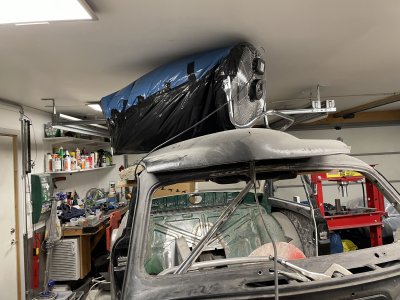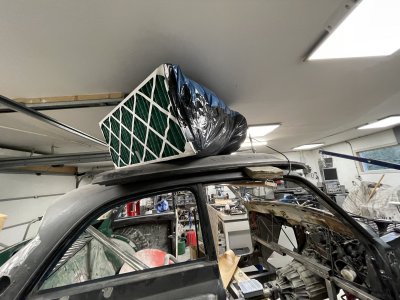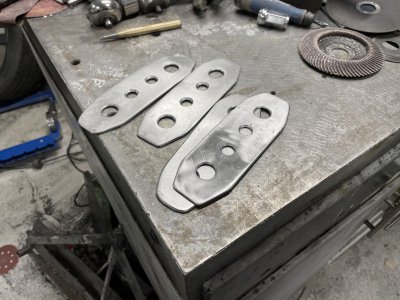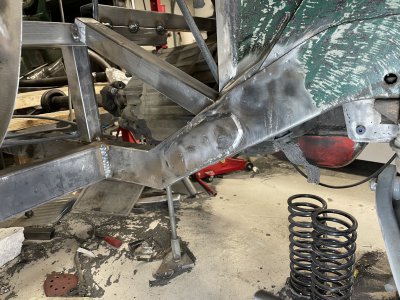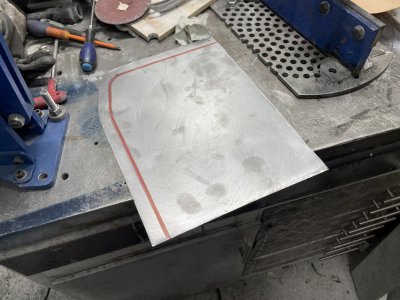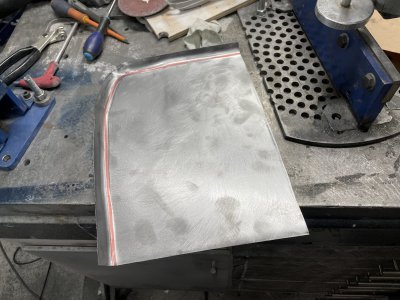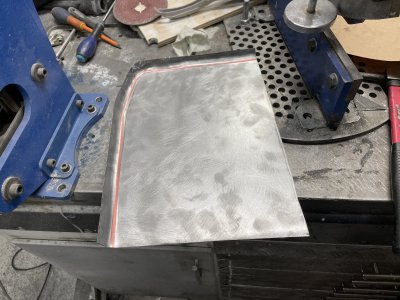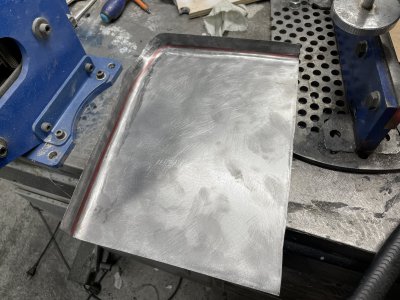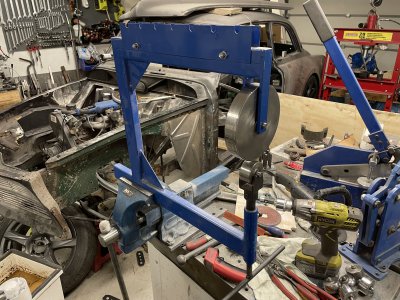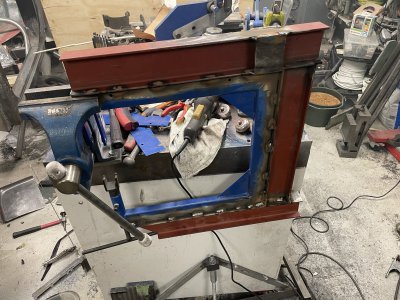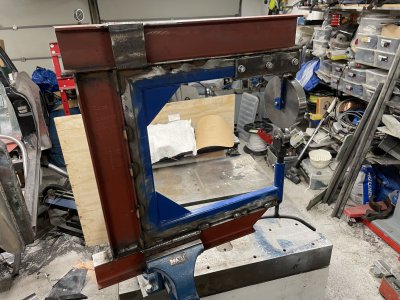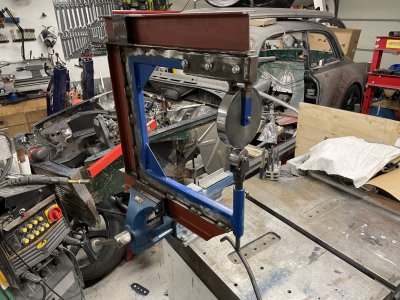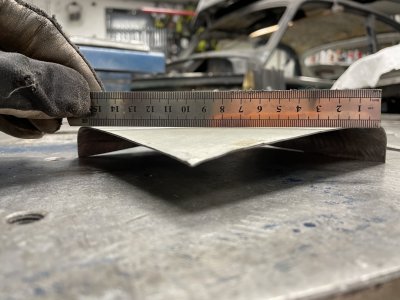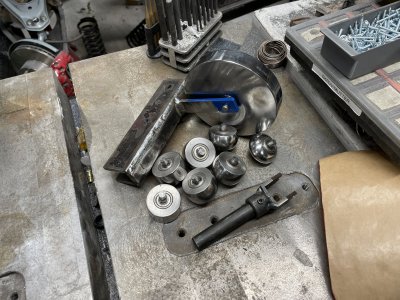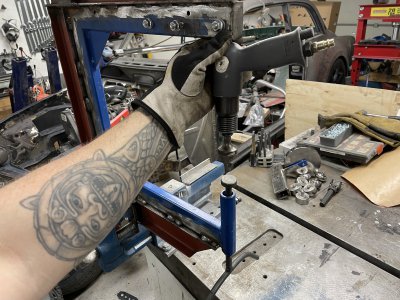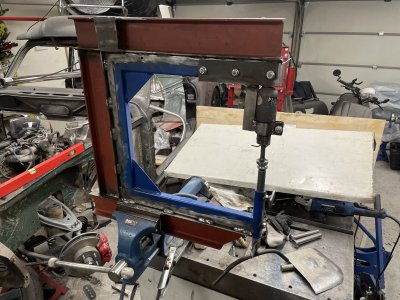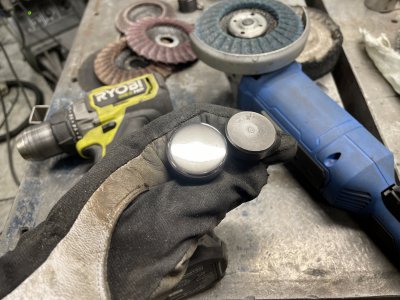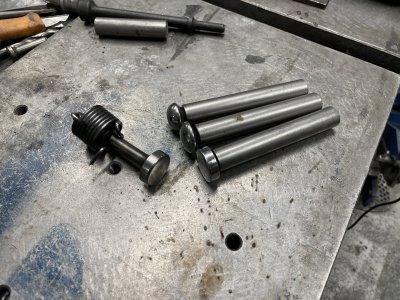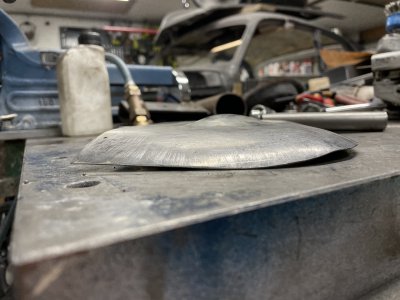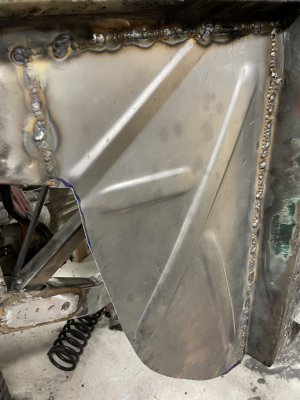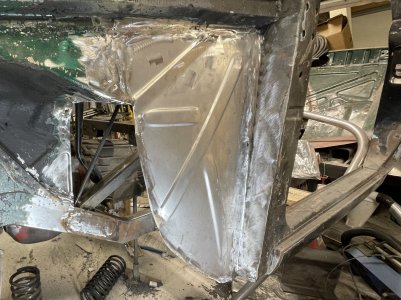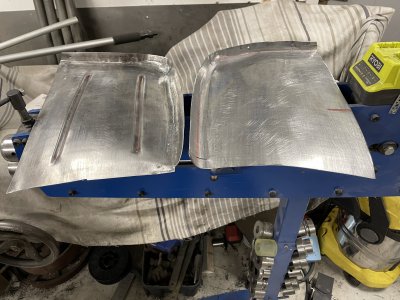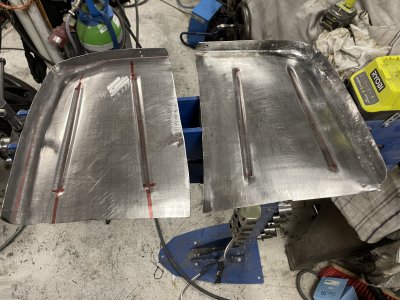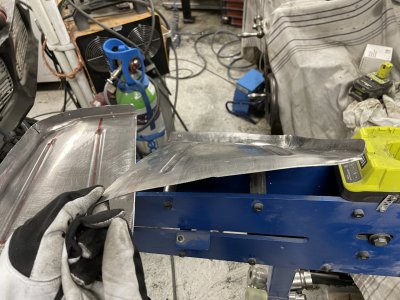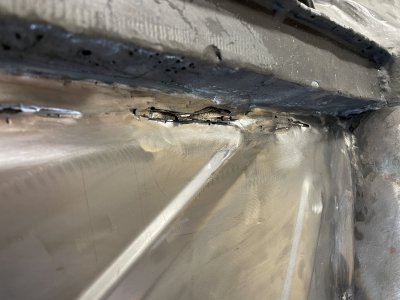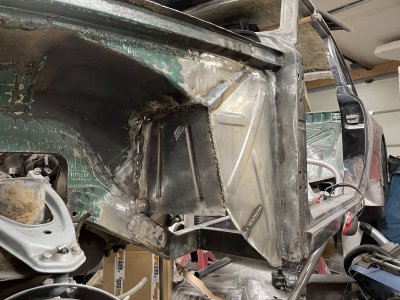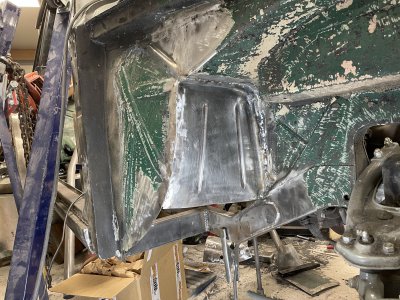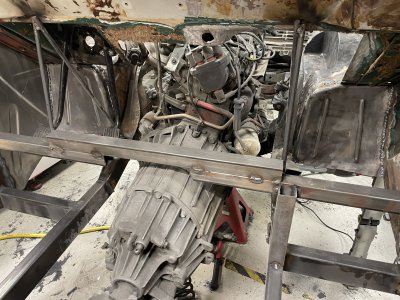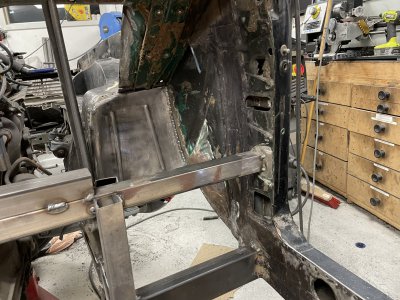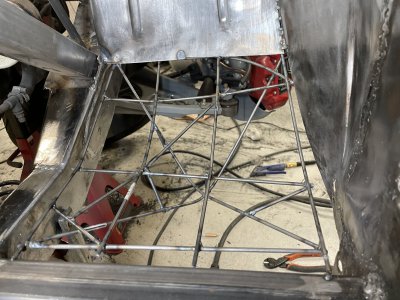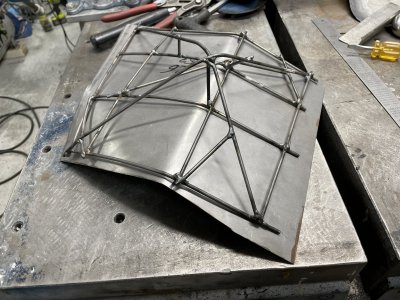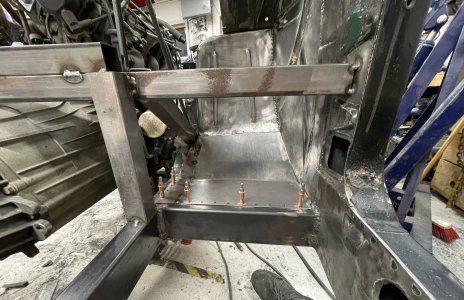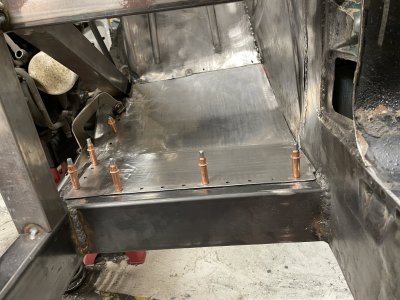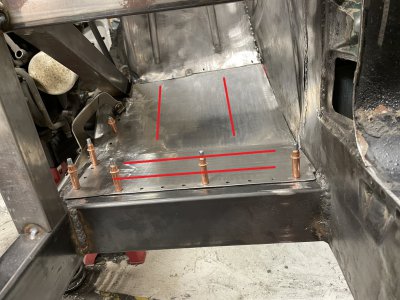- Joined
- Nov 7, 2019
- Messages
- 483
Faster than a bullet I lost track of the frame reinforcement idea and started experimenting with some sheet steel to cover this area up.
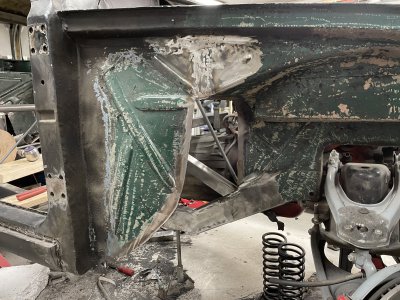
This body shaping stuff can be quite challenging, I often struggle with understanding how I even want the shape to end up but I figured I'd start with rolling the corners so I'd get a bit of a radius meeting up against the body.
I decided to not try and follow the perimeter as any turning when rolling a corner, this much and with this big of a radius, will bend the plate and be very hard to shrink straight again. Instead I did 2 mostly straight runs like this and then spent a good 2 hours with hammer, dolly, english wheel etc to try different things out.
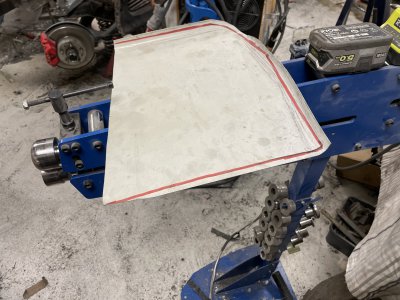
Initially I 'English wheeled' it so the bubble went into the car but this looked horrible, especially since the "side firewall" is a bit further behind than the sheet in the engine bay so the white plate ended up being both a hole and leaning backwards.
Luckily once a volume is established it can usually be punched the other way relatively easily.
I imagine it would've been way better to make a wire buck to try some shapes out without having to form an entire sheet.
I did start with a paper template but it's a difficult shape to "understand" with just paper held up mid-air.
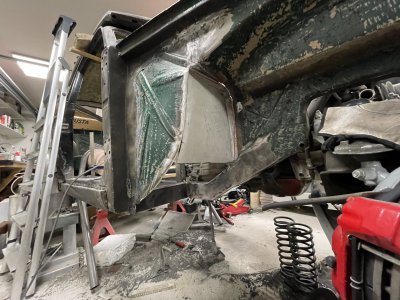
Bit more work and also spent quite some time cleaning up/grinding down welds all around this area.
Doesn't make much of a noticeable difference but every bit counts.
Was quite challenging getting the shapes to line up, took quite a bit of twisting and shrinking on the left side.
Due to the angle and twist in the panel the beads look real wonky but at least they make the sheet really stiff.
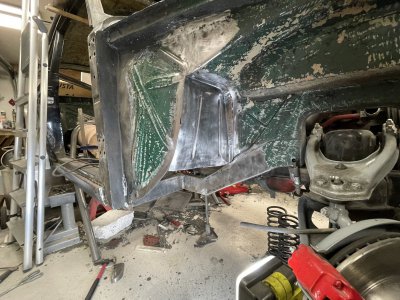

This body shaping stuff can be quite challenging, I often struggle with understanding how I even want the shape to end up but I figured I'd start with rolling the corners so I'd get a bit of a radius meeting up against the body.
I decided to not try and follow the perimeter as any turning when rolling a corner, this much and with this big of a radius, will bend the plate and be very hard to shrink straight again. Instead I did 2 mostly straight runs like this and then spent a good 2 hours with hammer, dolly, english wheel etc to try different things out.

Initially I 'English wheeled' it so the bubble went into the car but this looked horrible, especially since the "side firewall" is a bit further behind than the sheet in the engine bay so the white plate ended up being both a hole and leaning backwards.
Luckily once a volume is established it can usually be punched the other way relatively easily.
I imagine it would've been way better to make a wire buck to try some shapes out without having to form an entire sheet.
I did start with a paper template but it's a difficult shape to "understand" with just paper held up mid-air.

Bit more work and also spent quite some time cleaning up/grinding down welds all around this area.
Doesn't make much of a noticeable difference but every bit counts.
Was quite challenging getting the shapes to line up, took quite a bit of twisting and shrinking on the left side.
Due to the angle and twist in the panel the beads look real wonky but at least they make the sheet really stiff.



